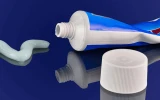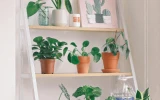Top 6 Hard-to-Kill Indoor Plants
Published on Oct 14, 2019

I’ll admit it. I’m the plant murderer, or at least that’s what my family calls me.
Despite dreams of creating a garden even Costa Georgiadis (the guy with that beard) would envy, plants that enter my yard inevitably meet their maker.
The current indoor plant trend is a game changer, but if you’re like me, you want to know the facts before you send yet another plant to the big garden in the sky.
Here’s what I’ve discovered about 6 popular indoor plant species.
How to Choose The Best Indoor Plants
-
Toughness - How much maintenance is required to keep your new friend alive.
-
Superpowers - Many plants have special abilities, such as repelling insects or removing toxins from the air – we’ll rate them for you.
-
Pricing - We know you want bang for your buck, so we’ve rated the affordability of the top 6.
The Top 6 Easiest Indoor Plants to Keep Alive
1. Zanzibar Gem (Zamioculcas zamiifolia)

Experts rated this plant as almost impossible to kill. We’ll just see about that. Put this one in a low light area, mist its leaves daily and don’t over-water the soil. It looks fantastic with its pretty, tropical leaves and would be an ideal addition to a living area.
Toughness
Water once a month because the plant is great at storing water. It only requires standard potting mix and should be kept out of direct sunlight.
Superpowers
This plant is resistant to pests and diseases, while its air purifying qualities remove many toxins from your indoor air.
Note:These plants can be toxic, so keep away from kids and pets, and wash your hands well after handling.
Pricing
Depending on the size, the price ranges from around $20 for a 25cm plant (size of pot not included in measurement) to $100-$120 for a 70cm plant.
2. Spider plants

Their long, green leaves and tendrils cascade down, making them an aesthetically striking choice. Spider plants thrive in warmer temperatures and are easy to grow. They’ll produce small flowers first, before developing spider-like fronds.
Toughness
A top option for novice gardeners, these plants prefer bright, indirect light and need water once a week. Don’t saturate the plant and keep it in a cooler part of the house. Using distilled or rainwater stops the leaves from turning brown. Fluoride found in water causes salt build up in your soil and those brown marks.
Superpowers
The spider plant reproduces quickly and absorbs mould and allergens, while targeting indoor air toxins such as formaldehyde and xylene.
Pricing
Super affordable at between $5-$10.
3. Aloe vera

It’s a popular choice in indoor plants and with good reason. They need minimal care, look great in most rooms of the house and have a host of benefits.
Toughness
Aim to water deep into the roots every few weeks during warm months; less so during winter. Aloe Vera does well in moderate temperatures and placed in indirect natural or artificial light.
Superpowers
It has myriad uses, from treating cuts and burns thanks to its anti-inflammatory properties to eliminating carbon monoxide, benzene, formaldehyde, trichloroethylene, xylene and more. It’s completely non-toxic, too!
Pricing
I picked up a small Aloe Vera plant at Bunnings for $10.50 as a starting point. If it survives, I’d probably spend a bit more to get a nicer, larger Aloe species.
4. Snake plant

You’ll often find this in people’s bedrooms. It only needs minimal night, definitely brings a little colour into a boring bedroom and can help you to sleep better. Here’s the rundown.
Toughness
As one of the hardier indoor plants available, the Snake Plant will look cared for even if you haven’t touched it for weeks. They’ll survive low light, drought and pest problems.
Superpowers
Makes your air cleaner and also converts carbon monoxide into oxygen, improving your sleep.
Pricing
A 19cm plant costs $30 from Ikea. There are many varieties (it’s also known as mother-in-law’s tongue), so do your research.
5. Swiss cheese plant (monstera deliciosa)

Native to the tropical forests of southern Mexico, this retro-looking plant is back in style. It does require a little more care than the others but has some great benefits.
Toughness
Keep it in a warmer environment, as colder temperatures will slow or stop its growth. Water only when soil is dry to prevent waterlogging. They can be prone to pests though, which you can prevent by cleaning the leaves regularly.
Superpowers
The Swiss Cheese Plant is effective at humidifying air-conditioned rooms. It looks great and will need plenty of space to grow. Just keep it away from your pets and children, as the leaves may be poisonous if ingested.
Pricing
A 24cm plant will cost around $50 from Ikea. I saw some fairly priced mature plants on Gumtree as well.
6. Areca palms

I love the look of these but of course, they are the hardest to care for and most expensive. They only just made it onto the list! They are worth it if you want to challenge your green thumb, though.
Toughness
You will need to monitor this one a bit closer to get the water ratio right. My tip? Buy a self-watering pot – you should be able to get a standard pot for between $15-$30.
Superpowers
This is another plant that absorbs air pollutants, namely toluene and acetone.
Pricing
You’re looking at between $20-$50. However, if you take good care of it, they will last about 10 years.
Note: The availability of these plants is seasonal. This is a rough guide based on research and my experiences with attempting to grow indoor plants. Get some advice from an expert if you need more information.




